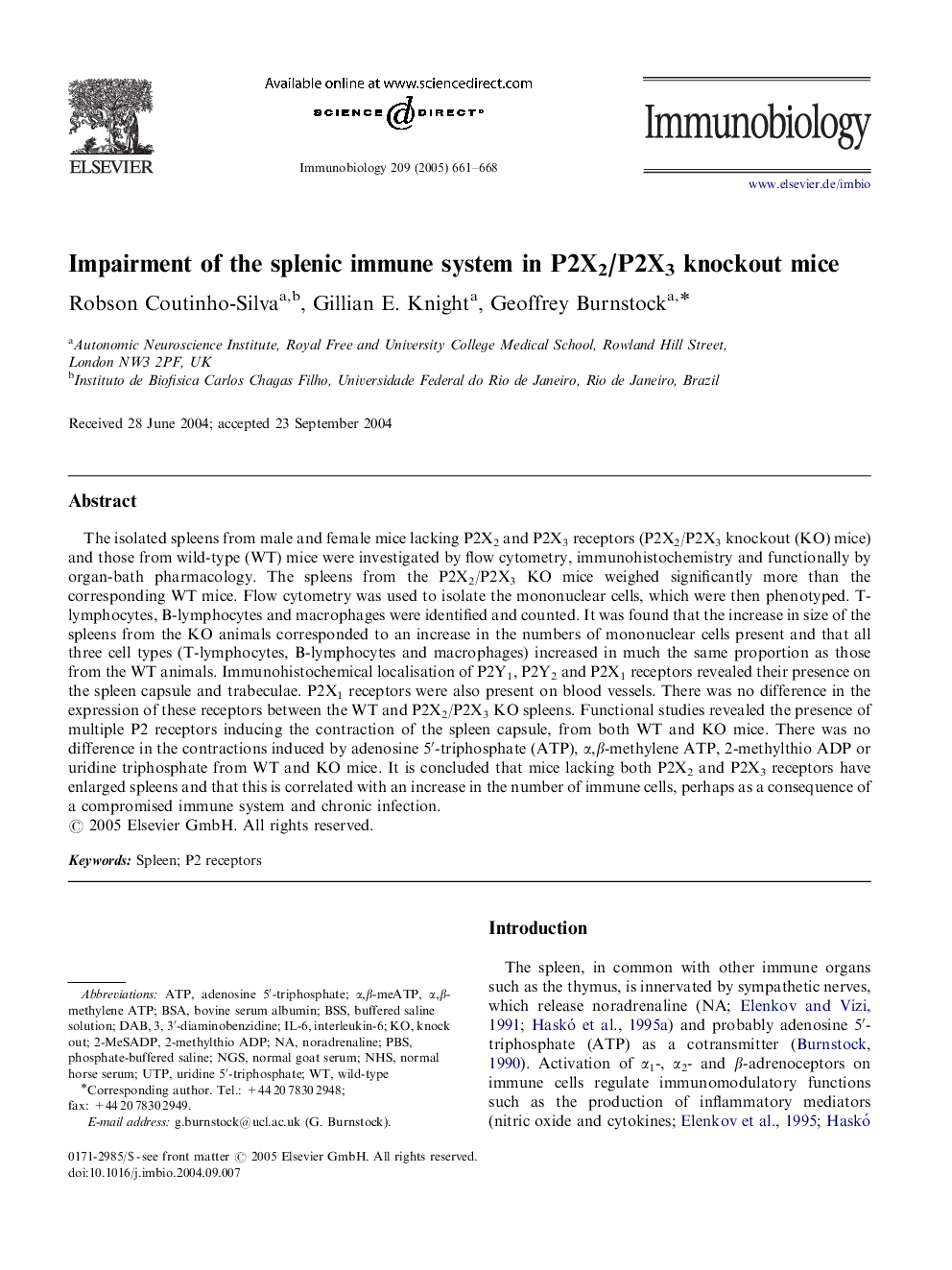| Article ID | Journal | Published Year | Pages | File Type |
|---|---|---|---|---|
| 10941174 | Immunobiology | 2005 | 8 Pages |
Abstract
The isolated spleens from male and female mice lacking P2X2 and P2X3 receptors (P2X2/P2X3 knockout (KO) mice) and those from wild-type (WT) mice were investigated by flow cytometry, immunohistochemistry and functionally by organ-bath pharmacology. The spleens from the P2X2/P2X3 KO mice weighed significantly more than the corresponding WT mice. Flow cytometry was used to isolate the mononuclear cells, which were then phenotyped. T-lymphocytes, B-lymphocytes and macrophages were identified and counted. It was found that the increase in size of the spleens from the KO animals corresponded to an increase in the numbers of mononuclear cells present and that all three cell types (T-lymphocytes, B-lymphocytes and macrophages) increased in much the same proportion as those from the WT animals. Immunohistochemical localisation of P2Y1, P2Y2 and P2X1 receptors revealed their presence on the spleen capsule and trabeculae. P2X1 receptors were also present on blood vessels. There was no difference in the expression of these receptors between the WT and P2X2/P2X3 KO spleens. Functional studies revealed the presence of multiple P2 receptors inducing the contraction of the spleen capsule, from both WT and KO mice. There was no difference in the contractions induced by adenosine 5â²-triphosphate (ATP), α,β-methylene ATP, 2-methylthio ADP or uridine triphosphate from WT and KO mice. It is concluded that mice lacking both P2X2 and P2X3 receptors have enlarged spleens and that this is correlated with an increase in the number of immune cells, perhaps as a consequence of a compromised immune system and chronic infection.
Keywords
Related Topics
Life Sciences
Biochemistry, Genetics and Molecular Biology
Cell Biology
Authors
Robson Coutinho-Silva, Gillian E. Knight, Geoffrey Burnstock,
